Planning a trip to Tokyo can be overwhelming, but with a minimum of 5 days, you can experience the best of this vibrant city.
With its diverse neighborhoods, from traditional temples to futuristic skyscrapers, Tokyo has something to offer for every kind of traveler.
You’ll be able to navigate Tokyo’s extensive transportation system like a local, saving you time and confusion. This comprehensive guide will help you make the most of your 5-day visit, ensuring an unforgettable adventure in this incredible city.
Whether you’re visiting Tokyo for the first time or returning to explore more, this guide provides the perfect framework for your trip.
Planning Your Tokyo Adventure
As you prepare for your Tokyo adventure, it’s essential to plan ahead to make the most of your trip. With so many attractions and experiences available, a little preparation can go a long way in ensuring a smooth and enjoyable journey.
Best Time to Visit Tokyo
Tokyo is a year-round destination, but the best time to visit depends on your preferences. Spring, with its famous cherry blossoms, is a popular time, offering picturesque views and mild weather. On the other hand, autumn brings comfortable temperatures and beautiful foliage. Summer can be hot and humid, but it’s also the season for various festivals and events. Winter is generally mild, with some colder days, and is a good time to enjoy winter illuminations and New Year celebrations.
When planning your trip to Tokyo, consider what you want to experience. If you’re looking for comfortable weather and scenic beauty, spring or autumn might be the best choice. For those interested in specific events or festivals, plan accordingly to make the most of your days in Tokyo.
Essential Apps and Tools for Tokyo Travel
Navigating Tokyo can be easier with the right travel tools. Several mobile apps can help you get around, find attractions, and enjoy your stay. For instance, translation apps can assist with language barriers, while transportation apps provide route information and schedules. Digital payment systems can also simplify your transactions, making it easier to buy tickets or pay for goods and services.
Some essential apps to consider include Google Maps for navigation, Hyperdia for train routes, and Japan Travel Bureau’s Japan Guide app for general travel information. Having these tools on your phone can significantly reduce stress and enhance your Tokyo experience.
Cultural Etiquette Tips for First-Time Visitors
Understanding and respecting local culture is crucial when visiting Tokyo. Simple actions, like proper etiquette on trains and at temples, can make a significant difference. For example, it’s customary to be quiet and give up your seat to elderly or disabled passengers on trains. When visiting temples or shrines, dress modestly and follow any specific rules or guidelines provided.
Additionally, being mindful of dining customs, such as waiting for the host to start eating before you begin and not leaving your chopsticks standing upright in your rice, can show respect for the local culture. These tips will help you navigate social situations with confidence and respect.
Getting Around Tokyo: Transportation Guide
Navigating Tokyo’s vast transportation network can seem daunting, but with the right guidance, you’ll be moving around like a local in no time. Tokyo’s transportation system is renowned for its efficiency and complexity, offering various options for travelers to reach their destinations.
From Narita or Haneda Airport to the City
Upon arrival at Narita or Haneda Airport, you’ll need to decide on the best way to get to your destination in Tokyo. Both airports offer a range of options, including express trains, buses, and private transfer services. The Narita Express is a convenient option for those heading to Shibuya or Shinjuku, while Haneda Airport is more centrally located, with the Tokyo Monorail providing a quick link to the city center.
Mastering Tokyo’s Train System
Tokyo’s train system is a complex network of JR lines, Tokyo Metro, and private railways. Understanding the differences between these lines is crucial for navigating the city efficiently. The JR Pass is an excellent option for travelers planning to explore beyond Tokyo, as it offers unlimited travel on JR lines, including the Narita Express.
IC Cards: Your Transit Essential
IC cards like Suica and Pasmo are indispensable for seamless travel in Tokyo. These prepaid cards can be used on most trains, buses, and even for purchases at convenience stores. You can purchase them at any major train station, and they’re rechargeable, making them a convenient option for travelers.
Train Etiquette and Rush Hour Tips
Navigating Tokyo’s trains during rush hour can be challenging, but with a few tips, you’ll be prepared. Avoid peak hours if possible, and be mindful of train etiquette, such as giving up your seat to elderly or disabled passengers and avoiding eating on the train.
By understanding Tokyo’s transportation system, including airport transfers, train networks, and the use of IC cards, you’ll be well-equipped to explore this vibrant city with ease.
Where to Stay in Tokyo
When planning your Tokyo adventure, deciding where to stay is as crucial as planning what to do. Your accommodation can significantly impact your experience, affecting how you navigate the city and enjoy its offerings.
Shibuya and Shinjuku: Central Hubs
Shibuya and Shinjuku are Tokyo’s bustling central hubs, known for their excellent transportation connections and vibrant nightlife. Staying in either area provides easy access to many of Tokyo’s attractions. For instance, Shibuya is famous for its scramble crossing and is a hub for shopping and entertainment.

If you’re looking for top-rated hotels, Shibuya has several excellent options. The JR-East Hotel Mets Shibuya is praised for its prime location, making it an ideal choice for travelers who want to be in the heart of the action.
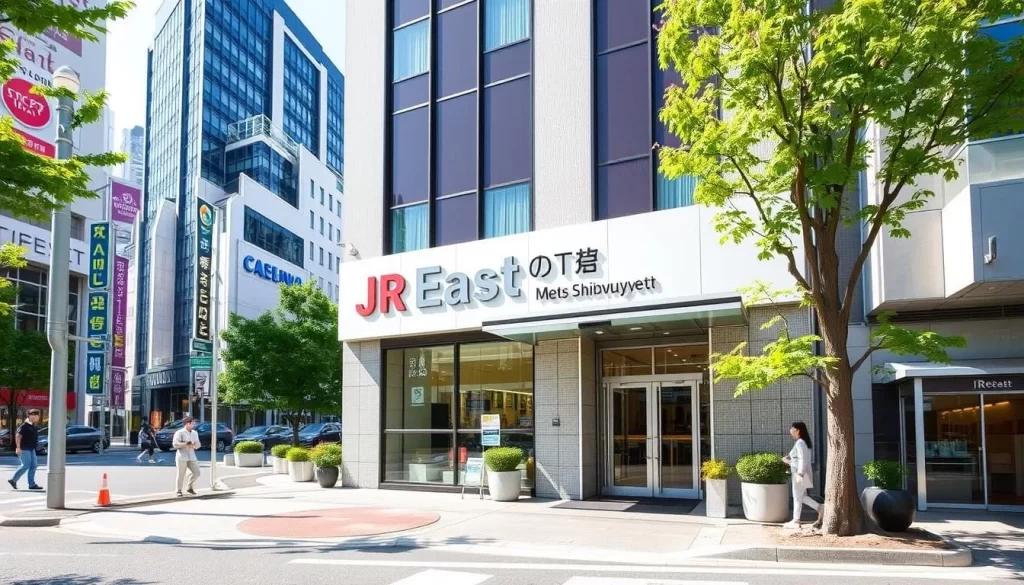
Another great option is the Shibuya Granbell Hotel, known for its stylish rooms and convenient access to local amenities.

Asakusa and Ueno: Traditional Tokyo
For those interested in experiencing traditional Tokyo, Asakusa and Ueno offer a glimpse into the city’s past. These areas are known for their historical landmarks and cultural experiences, such as Senso-ji Temple in Asakusa.
While slightly less central than Shibuya or Shinjuku, Asakusa and Ueno still have good public transportation links, making it relatively easy to explore other parts of the city.
Accommodation Recommendations for Every Budget
Tokyo offers a wide range of accommodations to suit every budget. For luxury travelers, hotels like The OneFive Tokyo Shibuya offer boutique experiences with high-end amenities.
For those on a tighter budget, options like Mustard Hotel provide modern comfort without breaking the bank.
Regardless of your budget, it’s essential to choose a hotel that is within walking distance to a train station. This will save you time and make navigating the city more manageable during your stay.
Day 1: Shinjuku, Meiji Shrine, Harajuku, and Shibuya
Embark on your Tokyo adventure with a day that blends serene gardens, cultural landmarks, and vibrant street life. Your itinerary is packed with experiences that showcase the city’s diverse character.
Morning: Shinjuku Gyoen and Coffee
Begin your day with a peaceful walk through Shinjuku Gyoen National Garden, one of Tokyo’s most beautiful parks. The garden’s tranquil atmosphere provides a serene escape from the city‘s hustle and bustle. After working up an appetite, head to a local coffee shop near the park to fuel up for the day ahead. Tokyo’s renowned coffee culture is sure to invigorate you for the adventures to come.
Midday: Meiji Shrine and Yoyogi Park
Next, visit the tranquil Meiji Shrine, a serene Shinto shrine located in a forested area, offering a perfect contrast to Tokyo’s urban landscape. Take a moment to appreciate the shrine’s peaceful ambiance and historical significance. Afterwards, stroll through the expansive Yoyogi Park, which offers a glimpse into traditional Japanese spirituality and culture.
Afternoon: Harajuku’s Takeshita Street and Okonomiyaki at Sakura-tei
In the afternoon, explore Harajuku’s famous Takeshita Street, where you can experience Japan’s unique youth culture, colorful fashion, and street food. Be sure to try some of the local crepes or cotton candy for a sweet treat. Later, head to Sakura-tei, where you can enjoy an interactive dining experience cooking your own okonomiyaki (Japanese savory pancake) at your table. This fun and delicious meal is a great way to engage with Tokyo’s culinary culture.
Evening: Shibuya Crossing and Dinner at FUKU Yakitori
As the day comes to a close, make your way to the iconic Shibuya Crossing, one of the world’s most famous intersections. For a great view of this bustling area, consider visiting the Shibuya Sky observation deck. To cap off your first day in Tokyo, enjoy an authentic yakitori dinner at FUKU Yakitori, where you can savor local flavors in a lively atmosphere. As night falls, you’ll have experienced just a taste of what this incredible city has to offer.
Day 2: Ueno, Asakusa, and Tokyo Skytree
Your Tokyo adventure continues on Day 2 with a journey through Ueno Park, the historic Asakusa district, and the towering Tokyo Skytree. This day is packed with cultural experiences, local food, and breathtaking views of the city.
Morning: Ueno Park and Ameya-Yokocho Market
Start your day by visiting Ueno Park, Tokyo’s oldest public park, which is home to several museums, a zoo, and beautiful seasonal landscapes. After exploring the park, head to Ameya-Yokocho Market, a bustling shopping street filled with vendors selling everything from fresh seafood to clothing. Be sure to try some local street food during your visit.
Midday: Kappabashi Kitchen Street
For lunch, head to Kappabashi Kitchen Street, a unique shopping district that specializes in restaurant supplies, including the famous plastic food displays that are quintessentially Japanese. You can find everything you need to set up a Japanese-style kitchen or simply enjoy the quirky atmosphere.
Afternoon: Asakusa and Senso-ji Temple
After lunch, make your way to Asakusa and visit Senso-ji, Tokyo’s oldest and most significant Buddhist temple. Enter through the iconic Kaminarimon (Thunder Gate) and stroll along Nakamise-dori, a shopping street leading up to the temple, where you can buy traditional snacks and souvenirs. For panoramic views of Asakusa, visit the Asakusa Culture and Tourist Information Center.
Evening: Tokyo Skytree and Sumida River Views
In the evening, visit Tokyo Skytree, the tallest structure in Japan, and enjoy breathtaking 360-degree views of Tokyo from the Tembo Deck and Tembo Galleria. Spend some time exploring the shops and attractions in the Tokyo Solamachi mall at the base of Skytree. For the best experience, plan your visit around sunset to enjoy the city lights.
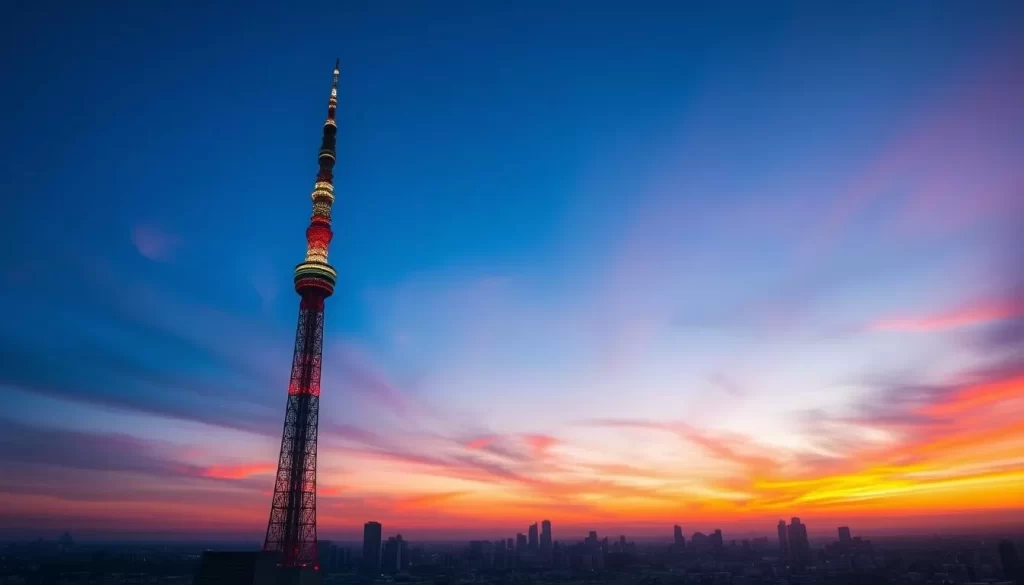
Day 3: Fish Markets, TeamLab, and Tokyo Tower
Day 3 in Tokyo promises an unforgettable blend of traditional and modern experiences, starting with an early visit to the fish market, followed by an immersive art encounter, and ending with a panoramic view of the city from Tokyo Tower.
Early Morning: Toyosu or Tsukiji Fish Market
Start your day with an early visit to either Toyosu, the new wholesale market with the famous tuna auctions, or Tsukiji Outer Market, the remaining retail section of the original market. Savor sushi breakfast at Sushizanmai or any bustling stall, and browse food and cookware shops.
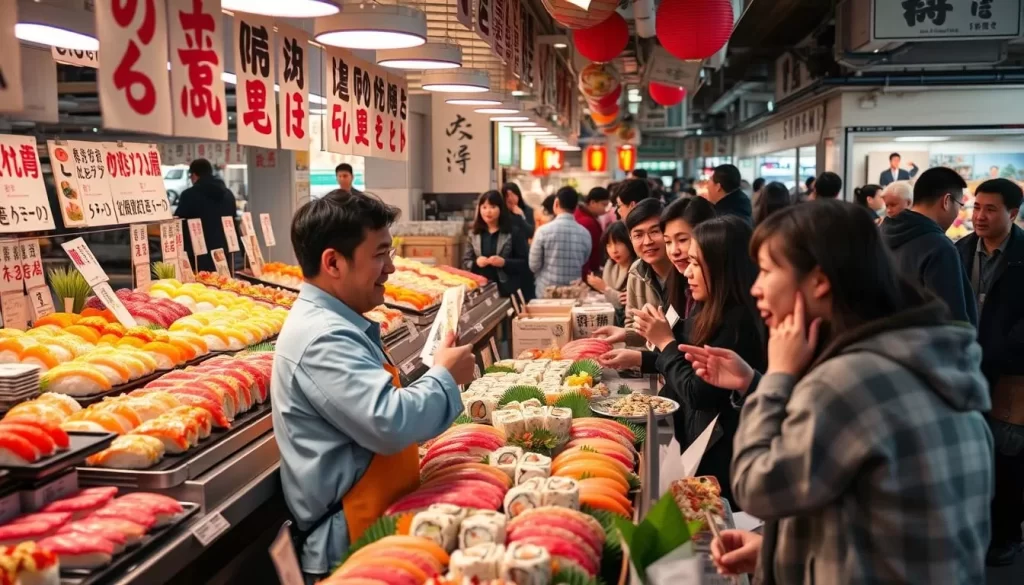
Midday: Ramen Lunch at Hashigo Ginza Hon-Ten
After exploring the fish market, head to Hashigo Ginza Hon-Ten for an authentic ramen lunch. Learn about the different regional styles of this iconic Japanese dish and how to order like a local.
Afternoon: TeamLab Planets Immersive Art
Experience teamLab Planets, one of Tokyo’s most popular immersive art experiences. Book tickets in advance to ensure entry, and be prepared to be mesmerized by the interactive installations.

Evening: Tokyo Tower Views
End your day with a visit to Tokyo Tower, offering panoramic views of the city. Time your visit to coincide with sunset, when the city transforms into a spectacular sea of lights.
Day 4: Imperial Palace, Ginza, and Akihabara
As you dive into Day 4, you’ll experience the best of Tokyo, from the serene Imperial Palace to the bustling streets of Ginza and Akihabara. This day is a perfect blend of tradition, luxury, and pop culture, giving you a well-rounded taste of what Tokyo has to offer.
Morning: Imperial Palace and Gardens
Begin your day with a visit to the Imperial Palace, the main residence of the Emperor of Japan. The palace is surrounded by beautiful gardens, including the East Garden, which is open to the public. Take a stroll through the meticulously maintained landscapes and learn about Japan’s imperial history.
The Imperial Palace is a must-visit for anyone interested in history and culture. As you walk through the gardens, you’ll be struck by the tranquility that pervades this historic site in the heart of the bustling city.
Midday: Shopping and Dining in Ginza
After visiting the Imperial Palace, head to Ginza, Tokyo’s premier luxury shopping district. Ginza is known for its high-end boutiques, department stores, and specialty shops showcasing the best of Japanese and international brands. You’ll find everything from luxury fashion to exquisite dining experiences.
Ginza is also renowned for its shopping paradise, with many stores, including Muji and Uniqlo, having their flagships here. You can enjoy a leisurely lunch at one of the many restaurants or cafes in the area, sampling some of Tokyo’s best cuisine.
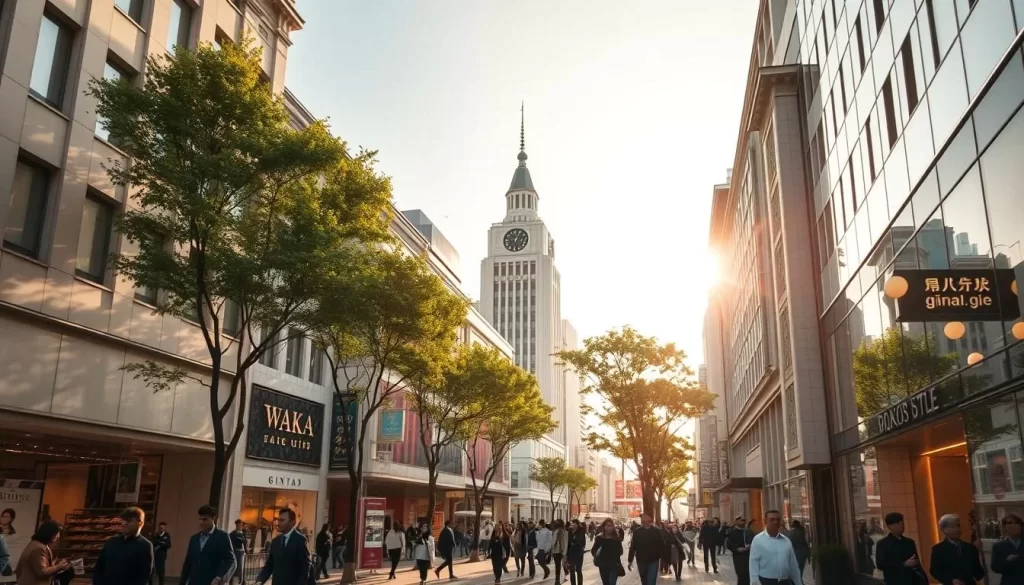
Afternoon: Akihabara Electric Town and Anime Culture
In the afternoon, make your way to Akihabara, often referred to as “Electric Town.” This district is the center of Japan’s anime, manga, and gaming culture. You’ll find a variety of colorful shops and unique themed cafes to explore.
Akihabara is a fascinating area that showcases Tokyo’s vibrant pop culture. As you navigate through its streets, you’ll discover a world of electronic gadgets, anime merchandise, and more.
Evening: Shinjuku’s Golden Gai and Omoide Yokocho
As the night falls, head to Shinjuku and experience its famous Golden Gai district. This maze of tiny bars and pubs comes alive at night, offering a unique and lively atmosphere. You’ll also visit Omoide Yokocho, another historic alley filled with small yakitori and izakaya establishments.
Exploring Golden Gai is an adventure in itself, with its narrow alleys housing over 200 tiny bars. Be sure to follow local etiquette, including understanding cover charge expectations and communicating effectively in establishments where English may be limited.
- Visit the Imperial Palace and its beautiful East Gardens.
- Enjoy luxury shopping and dining in Ginza.
- Explore Akihabara’s anime and manga culture.
- Experience Shinjuku’s nightlife in Golden Gai and Omoide Yokocho.
Day 5: Personalized Tokyo Experiences
On your final day in Tokyo, you can explore trendy neighborhoods, visit world-class museums, or take a scenic day trip. This flexibility allows you to tailor your experience based on your interests and travel style.
Nakameguro, Daikanyama, and Ebisu
Start your day in Nakameguro by visiting Onibus Coffee for a serene coffee experience. Then, take a stroll along the Meguro River, which runs through the scenic Meguro neighborhood. From there, head to Daikanyama, known for its upscale boutiques and fashionable atmosphere. Finally, visit Ebisu, where you can enjoy local cuisine and a more laid-back vibe.
Aoyama, Omotesando, and Art Museums
Aoyama and Omotesando are often referred to as “Tokyo’s Champs-Élysées.” These upscale districts are home to architectural landmarks, luxury brands, and world-class art museums. Spend your day exploring the Nezu Museum, which features a collection of Japanese, Chinese, and Korean art, or visit the nearby Omotesando Hills for a unique shopping experience.
Day Trip to Hakone and Mt. Fuji
If you’re looking for a day trip from Tokyo, consider visiting Hakone, a scenic town known for its hot springs, lakes, and potential views of Mt. Fuji. The trip to Hakone takes approximately 1.5 to 2 hours by train. Once you arrive, enjoy a cruise on Lake Ashi, visit the Owakudani Valley for hot springs and volcanic activity, and take in the breathtaking views of Mt. Fuji.
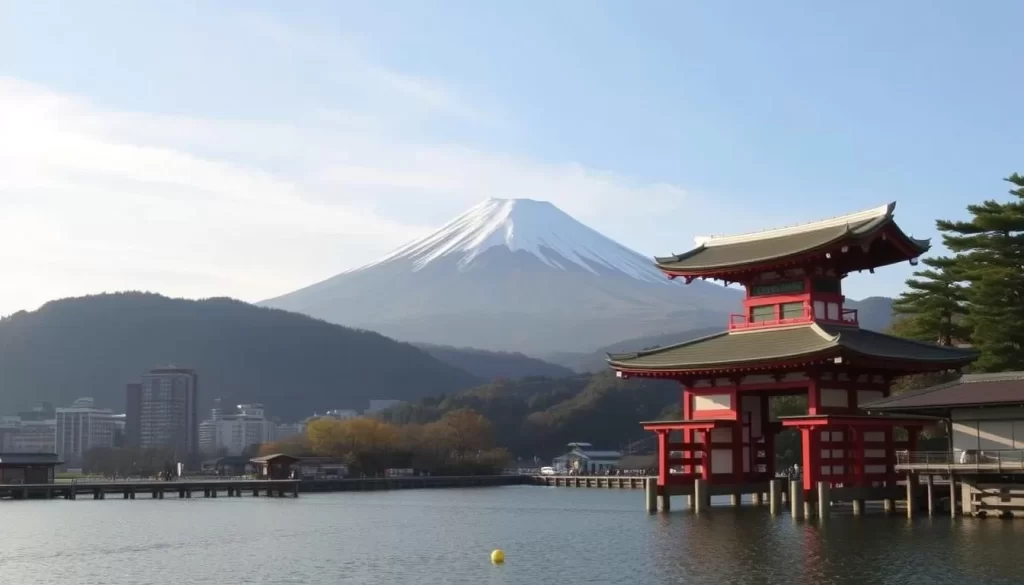
Each of these options offers a unique way to experience Tokyo and its surroundings. Whether you’re interested in culture, nature, or entertainment, you can choose the itinerary that best suits your preferences.
Tōkyō, Japan: Itinerary Ideas for a 5-day Visit – Food Guide
Embark on a gastronomic journey through Tokyo’s diverse culinary landscape. Tokyo, a city that never sleeps, offers a culinary experience that is as vibrant as it is diverse. During your 5-day trip, you’ll have the opportunity to explore various aspects of Japanese cuisine, from traditional sushi to modern twists on classic dishes.
Must-Try Japanese Dishes in Tokyo
When visiting Tokyo, there are several must-try Japanese dishes that should be on your culinary bucket list. Sushi is undoubtedly one of them, with Tokyo offering some of the freshest and most exquisite sushi experiences in the world. Another staple is ramen, a popular comfort food that comes in a variety of flavors and regional specialties. Don’t miss out on trying other local specialties like tempura, yakitori, and soba noodles.
For a truly authentic experience, visit the Toyosu Fish Market for sushi or Sagatani Shibuya Dogenzaka for soba noodles. These locations offer not only delicious food but also a glimpse into Tokyo’s culinary culture.
From Street Food to Michelin Stars
Tokyo’s food scene is a blend of affordable street food and Michelin-starred restaurants, catering to every budget and preference. For a unique dining experience, explore the city’s street food options, such as yakitori at FUKU Yakitori or try some delicious crepes in Harajuku. On the other end of the spectrum, Tokyo is home to numerous Michelin-starred restaurants, offering an upscale dining experience with exquisite cuisine.
Whether you’re looking for a casual meal or a luxurious dining experience, Tokyo has something for everyone. Be sure to check out Kappabashi Kitchen Street for a variety of food-related goods and unique dining experiences.
Unique Dining Experiences
Tokyo offers a range of unique dining experiences that go beyond the usual meal. From robot restaurants to themed cafes, there’s something to surprise every visitor. For a traditional Japanese dining experience, visit an izakaya, where you can enjoy a variety of small dishes and drinks in a lively atmosphere.
To make the most of your dining experiences in Tokyo, consider exploring different areas, such as Shibuya or Ginza, each offering its own unique culinary delights. Don’t hesitate to try new things and step out of your comfort zone to experience the full depth of Tokyo’s food culture.
Shopping in Tokyo: What to Buy and Where
Tokyo is a shopper’s paradise, offering a diverse range of shopping experiences from traditional markets to cutting-edge fashion districts. Whether you’re looking for unique souvenirs, the latest fashion trends, or traditional Japanese crafts, Tokyo has something to offer for every interest and budget.
Traditional Souvenirs and Craft Shops
When visiting Tokyo, you’ll want to bring home some traditional Japanese souvenirs. Some popular options include handcrafted ceramics, textiles, specialty food items, and unique stationery. To find these authentic items, explore Tokyo’s craft shops and traditional markets. The d47 Museum in Shibuya Hikarie is a great place to start, showcasing unique regional crafts and design from all 47 prefectures of Japan.
You can also visit traditional markets like Asakusa’s Nakamise Shopping Street, where you’ll find a variety of traditional snacks, souvenirs, and local goods.
Fashion Districts and Department Stores
Tokyo is renowned for its fashion districts, each with its own unique character and style. Harajuku is a must-visit for youth fashion and trendy boutiques, while Ginza offers luxury boutiques and high-end department stores. Shibuya is another popular shopping district, with iconic stores like Shibuya109 and Tower Records.
Some of Tokyo’s famous department stores include Isetan, Mitsukoshi, and Tokyu Hands, offering a wide range of products from high-end fashion to quirky gadgets and traditional Japanese goods.
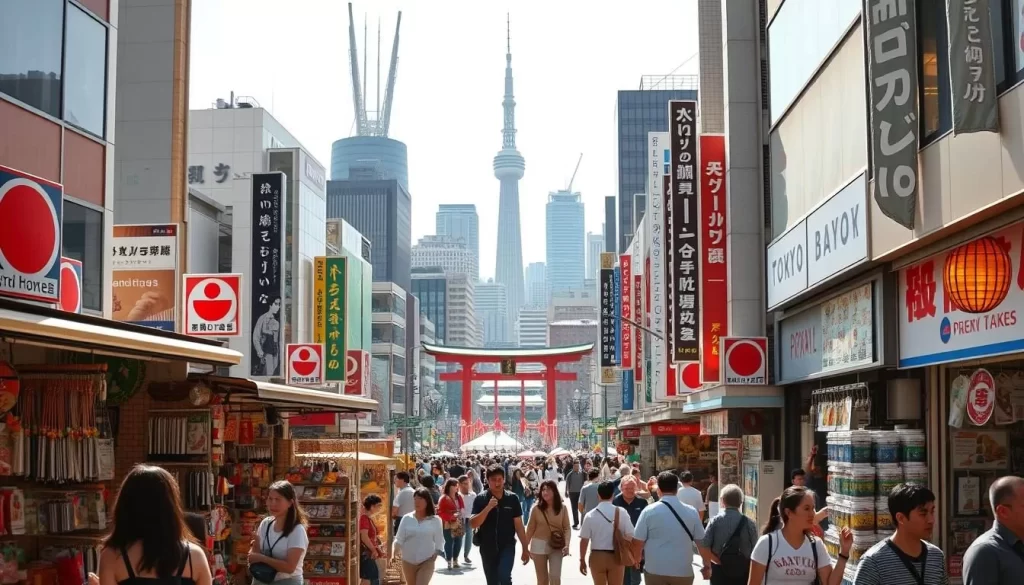
Tax-Free Shopping Tips
When shopping in Tokyo, you can take advantage of tax-free shopping procedures. To qualify, you’ll need to spend a minimum amount at participating stores, typically around ¥5,000. You can then process your tax refund at the store or at the airport before departing Japan.
| Store Type | Minimum Purchase | Refund Process |
|---|---|---|
| Department Stores | ¥5,000 | Store or Airport |
| Specialty Shops | ¥5,000 | Store or Airport |
| Duty-Free Shops | Varies | Airport |
By following these tax-free shopping tips, you can save money on your purchases and enjoy a more rewarding shopping experience in Tokyo.
Unique Experiences in Tokyo
Beyond typical sightseeing, Tokyo provides a wide range of unique activities that create lifelong memories. From adrenaline-pumping adventures to cultural immersion experiences, Tokyo has something for every kind of traveler.
Street Go-Karting Through Tokyo
Experience the thrill of street go-karting through Tokyo’s vibrant streets. Dress up in your favorite costume and navigate through famous neighborhoods like Shibuya and Harajuku.
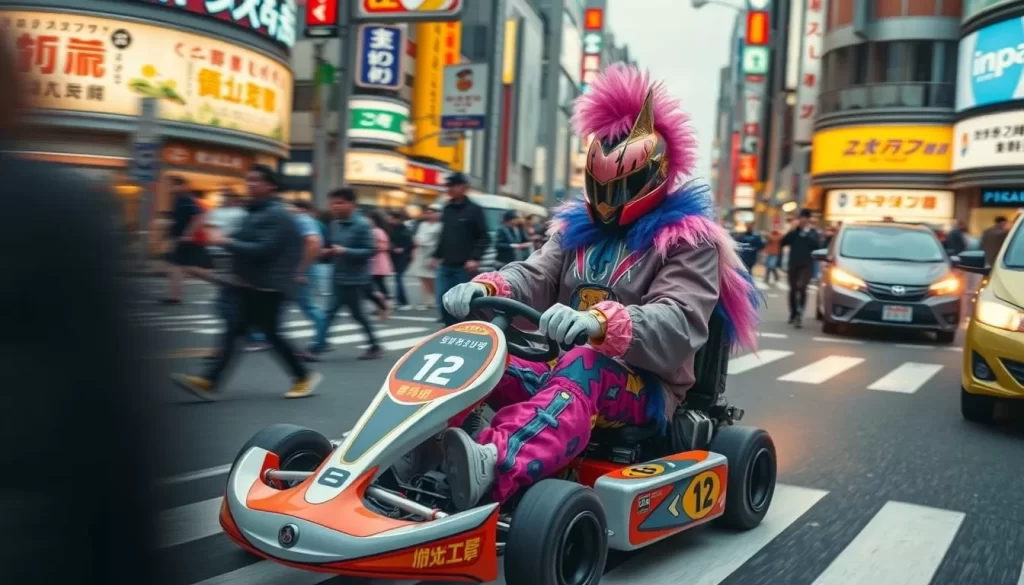
Sushi Making Classes
Learn the art of sushi making from professional chefs in Tokyo. Get hands-on experience in preparing this iconic Japanese dish and enjoy the fruits of your labor.
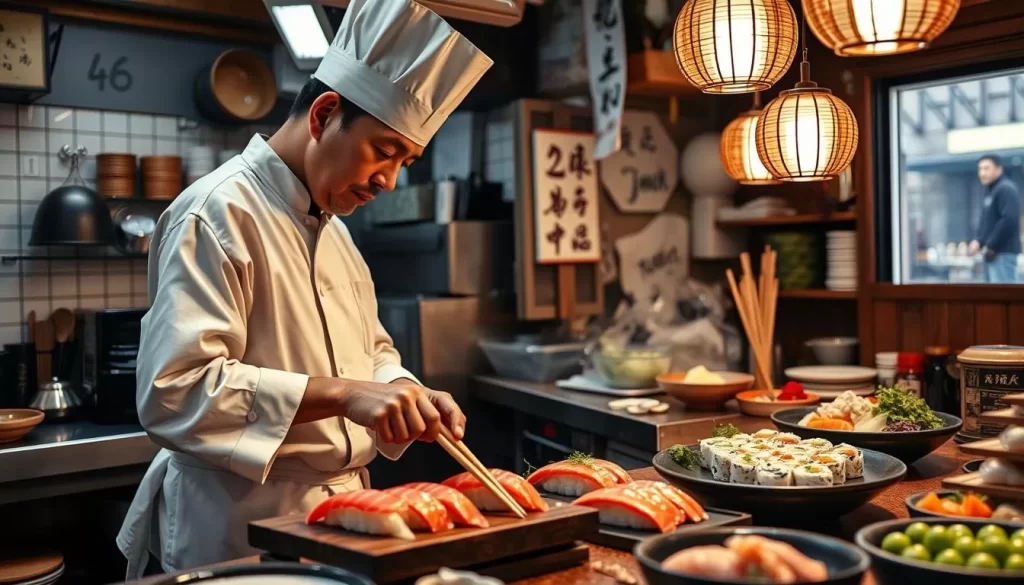
Animal Cafes and Themed Restaurants
Tokyo is famous for its quirky cafes and themed restaurants. Visit a cat cafe, owl cafe, or even a robot restaurant for a unique dining experience.
Watching Sumo Practice
For a truly authentic cultural experience, watch sumo practice sessions (asageiko) at sumo stables. Get a glimpse into this ancient sport and its traditions.
Seasonal Highlights in Tokyo
Tokyo is a city that transforms dramatically with each season, offering unique experiences and photo opportunities throughout the year. As you plan your trip to Tokyo, understanding the seasonal highlights can greatly enhance your visit.
Cherry Blossom Season Along Meguro River
During the spring, Tokyo’s famous cherry blossom season typically occurs in late March to early April. One of the best places to experience this beauty is along the Meguro River, where you’ll find picturesque views of blooming sakura trees. Take a leisurely walk along the riverbank, and enjoy the stunning scenery. If you time it right, you’ll be treated to the best cherry blossom trees around. Head to the Sakura Bridge for a beautiful view down the Meguro River.
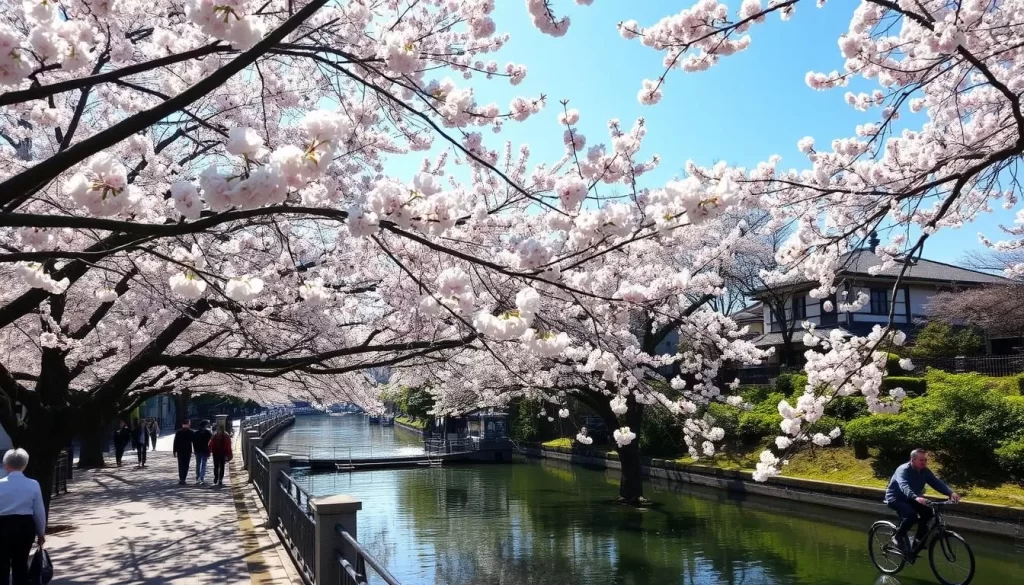
Summer Festivals and Fireworks
Summer in Tokyo is marked by vibrant festivals and spectacular fireworks displays. The city’s summer festivals, known as matsuri, are a great way to experience traditional Japanese culture. Enjoy the lively atmosphere, try local street food, and watch the breathtaking night fireworks displays.
| Festival | Date | Location |
|---|---|---|
| Sumida River Fireworks Festival | Late July | Sumida River |
| Tokyo Bay Fireworks Festival | Early August | Tokyo Bay |
Autumn Foliage in Tokyo’s Parks
Autumn brings a different kind of beauty to Tokyo, as the city’s parks and gardens display stunning red and gold foliage. Popular spots include Shinjuku Gyoen and Imperial Palace East Garden, perfect for a relaxing day out. Take a stroll through these beautiful areas and enjoy the koyo (autumn leaves).
Winter Illuminations and New Year Celebrations
As winter arrives, Tokyo is illuminated with beautiful night displays, known as winter illuminations. Visit popular spots like Shinjuku Gyoen or Tokyo Midtown to see the dazzling lights. Additionally, experience the traditional Japanese New Year (Shōgatsu) celebrations by visiting a local temple or shrine.
By understanding Tokyo’s seasonal highlights, you can plan your visit to coincide with the experiences that interest you most, making your trip to this vibrant city truly unforgettable.
Day Trips from Tokyo
With its comprehensive rail network, Tokyo makes it easy to take a day trip to nearby destinations that are steeped in history, culture, and natural beauty. The city’s efficient trains and buses connect you to a variety of exciting places, each offering a unique experience.
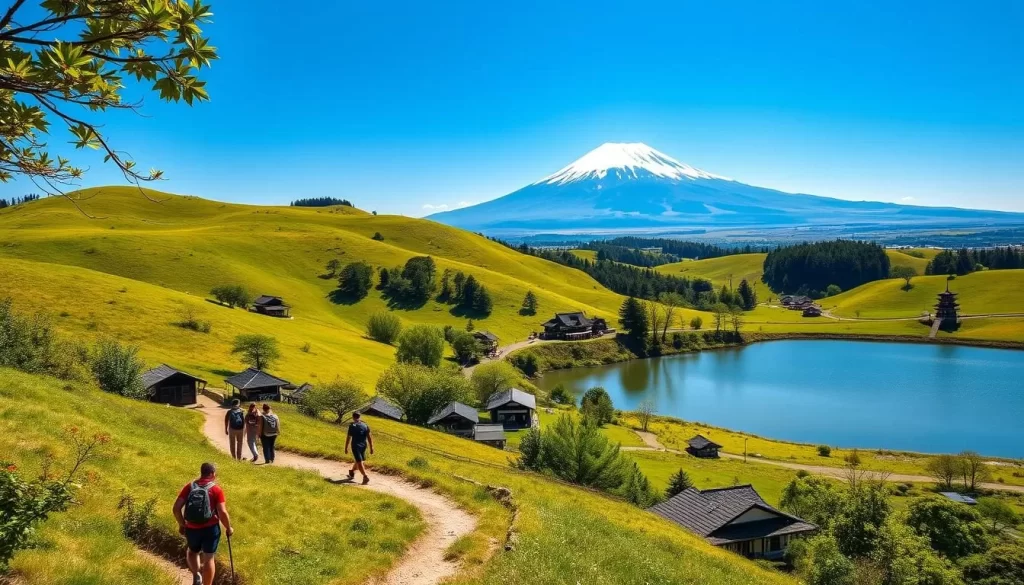
Hakone: Hot Springs and Mt. Fuji Views
Hakone is a popular day trip destination, famous for its hot springs, lake views, and spectacular vistas of Mt. Fuji on clear days. The trip to Hakone takes around 1.5 to 2 hours by train or bus, making it an ideal escape from the city. You can enjoy a relaxing soak in one of the many onsen (hot springs), take a cruise on Lake Ashi, or explore the Owakudani Valley for stunning views of Mt. Fuji.
Nikko National Park: Temples and Nature
Located about 2 hours away from Tokyo, Nikko National Park is a UNESCO World Heritage site that boasts stunning temples and shrines set amidst beautiful natural scenery. The park is home to the Toshogu Shrine, a magnificent temple complex dedicated to Tokugawa Ieyasu, the founder of the Tokugawa shogunate. You can explore the intricate carvings and ornate architecture of the shrine, and then take a leisurely walk in the surrounding park area.
Kamakura: Ancient Capital and Beaches
Kamakura, once the capital of Japan, is another great day trip destination from Tokyo, accessible within an hour by train. You can visit the iconic Great Buddha statue at Kotokuin Temple, explore the historic temple grounds, and enjoy the city’s relaxed atmosphere. Kamakura also offers beautiful beaches, such as Yuigahama Beach, where you can take a stroll or enjoy water activities.
Kawagoe: Edo-Period Architecture
For a glimpse into Japan’s Edo-period past, head to Kawagoe, often referred to as “Little Edo.” This charming town is about an hour away from Tokyo by train. You can stroll through the Kurazukuri Street, lined with traditional warehouses and shops selling local sweets and souvenirs. Kawagoe is a great place to experience traditional Japanese culture and architecture.
Practical Tips for Your Tokyo Visit
As you prepare for your Tokyo adventure, there are several practical tips to keep in mind to ensure a smooth and enjoyable trip.
Money Matters: Cash vs. Card in Japan
Japan is still a predominantly cash-based society, although credit card acceptance is increasing, especially among younger businesses. You’ll need cash for many transactions, including at some restaurants, shops, and traditional ryokans.
ATMs: Look for ATMs affiliated with major banks like Mitsubishi UFJ, Mizuho, or Sumitomo Mitsui, as they often accept international cards. Convenience stores like 7-Eleven, Lawson, and FamilyMart also have ATMs that accept foreign cards.
Tip: Inform your bank of your travel plans to avoid any issues with your card being flagged for suspicious activity.
Staying Connected: Wi-Fi and SIM Cards
Staying connected in Tokyo is relatively easy, with various options for data access. You can rent a pocket Wi-Fi device or purchase a prepaid SIM card before your trip.
A prepaid SIM card is a convenient option, and you can even pre-purchase it on Amazon. This way, you’ll have data access as soon as you arrive in Tokyo.
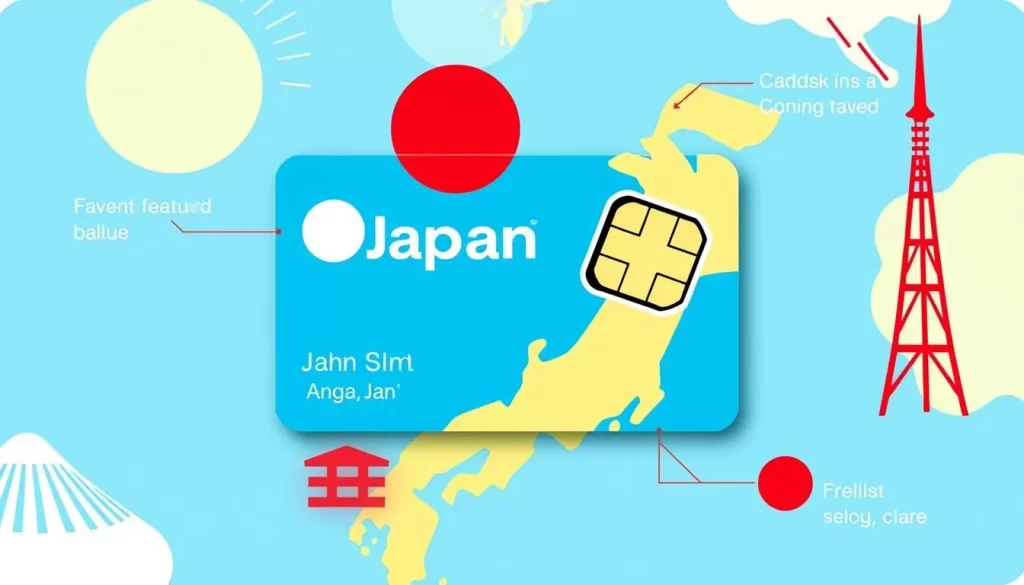
Navigating Language Barriers with Translation Apps
While many Tokyo residents, particularly younger people and those in the service industry, speak some English, it’s still a good idea to have a translation app on your phone.
Google Translate is a powerful tool that can help you navigate menus, signs, and conversations. It even has an offline mode for when you don’t have data access.
Safety and Emergency Information
Tokyo is considered one of the safest major cities in the world, but it’s still essential to be prepared for any situation.
Make sure you have the contact information for your country’s embassy and know the local emergency numbers. It’s also a good idea to carry a small phrasebook or have a translation app on your phone.
Is the JR Pass Worth It for Tokyo?
When planning your trip to Tokyo, one of the key decisions you’ll make is whether or not to purchase a JR Pass. This pass can significantly impact your travel experience, especially if you’re planning to explore not just Tokyo, but other parts of Japan.
Understanding the Japan Rail Pass
The Japan Rail Pass is a special ticket that allows unlimited travel on JR trains, buses, and ferries. To be eligible, you must enter Japan as a temporary visitor and have the appropriate entry stamp on your passport. You can purchase the pass before arriving in Japan, and then exchange it for the actual pass at a JR office upon arrival.
The JR Pass covers many JR lines in Tokyo, including the valuable Yamanote Line that loops around central Tokyo’s major districts. However, it’s essential to note that not all train lines in Tokyo are JR lines; some are operated by other companies like Tokyo Metro.
When to Use the JR Pass in Tokyo
If your travel plans include day trips from Tokyo to other cities like Kyoto or Nikko, the JR Pass can be extremely valuable. It covers the bullet trains (Shinkansen) that connect these cities, potentially saving you a significant amount of money.
For travel within Tokyo, if you plan to use the JR lines frequently, the JR Pass can still be beneficial, especially if you’re staying for an extended period or plan to visit multiple districts that are far apart.
Alternatives to the JR Pass for Tokyo Travel
For travelers who plan to stay within Tokyo and primarily use subway lines not covered by the JR Pass, alternatives like a Tokyo Metro Pass or prepaid IC cards (such as Suica or Pasmo) might be more cost-effective.
These alternatives can provide more flexibility and are often sufficient for navigating Tokyo’s extensive subway system. It’s also worth considering that some local lines and buses are not covered by the JR Pass.
In conclusion, whether the JR Pass is worth it for your Tokyo trip depends on your travel plans. If you’re staying within Tokyo and using local subway lines, alternatives might be more suitable. However, if you’re planning day trips or extensive travel on JR lines, the JR Pass could be a valuable investment.
Packing Essentials for Tokyo
As you prepare for your trip to Tokyo, it’s essential to pack the right items to ensure a comfortable and enjoyable journey. With its unique blend of traditional and modern culture, Tokyo has a lot to offer, but being prepared is key to making the most of your day trips and explorations.
Clothing for Tokyo’s Seasons
Tokyo’s climate varies significantly throughout the year, from hot and humid summer days to potentially snowy winters. Packing clothing that is suitable for the season is crucial. For summer, light, breathable clothing is a must, while winter requires warm, layered clothing. Consider the time of year you’re visiting and plan accordingly to ensure you’re comfortable during your visit.
Tech and Comfort Items
In addition to seasonal clothing, there are several tech and comfort items that can enhance your travel experience. Downloading the Google Translate Japanese Pack and Tokyo Google Maps to your phone can be incredibly useful. Moreover, wearing comfortable walking shoes is a must, as you’ll likely be exploring the city on foot for several hours a day.
| Item | Description | Benefit |
|---|---|---|
| Google Translate Japanese Pack | Downloadable translation pack for offline use | Eases communication with locals |
| Tokyo Google Maps | Offline maps for navigation | Reduces mobile data usage |
| Comfortable Shoes | Shoes designed for walking | Enhances comfort during extended walks |
Conclusion
With this comprehensive guide, you’re now ready to embark on an unforgettable journey through Tokyo. Your trip to Tokyo is sure to be an exciting experience, filled with discovery and adventure. As you navigate this vibrant city, remember to balance your planned activities with spontaneous exploration to truly make the most of your day by day itinerary.
From understanding the best time to visit Tokyo to mastering its train system, you’ve got the essential tools for a smooth trip. Don’t forget to explore beyond the typical tourist areas and discover your own favorite things to do in Tokyo. Whether you’re looking for a detailed itinerary or just some helpful tips, this guide has been your companion every step of the way.
As you visit Tokyo, be sure to check out my Tokyo travel guide for first-timers, alternative Tokyo guide, and recommendations for the best coffee shops. If you’re planning to explore more of Japan, consider my 2-week Japan itinerary and tips for getting around Japan by rail. With these resources, you’re all set for an unforgettable adventure in Tokyo and beyond.
The above is subject to change.
Check back often to TRAVEL.COM for the latest travel tips and deals.
Here are some Tours & Sightseeing suggestions that might pique your interests!






